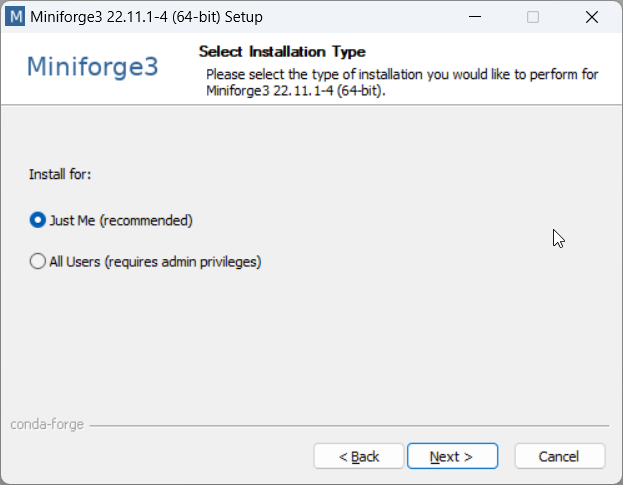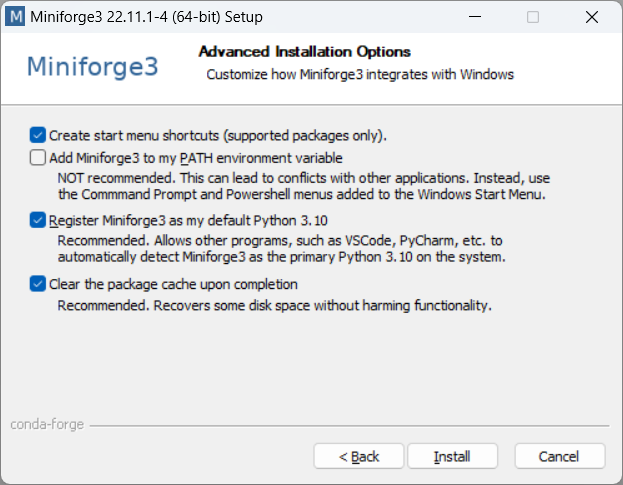Getting Started¶
In this section, we will guide you through the installation of las-geoh5 and it’s dependencies inside a conda environment.
Installation¶
Install Conda¶
Install Conda for Python 3.10 or higher. Follow this link to download its Windows installer (~140 MB of disk space):


Registering the Conda distribution as the default Python 3.10 interpreter is optional. Preferably uncheck that box if you already have Python 3 installed on your system.
Note
We recommend installing Miniforge: beyond being smaller, it also installs packages from the conda-forge repository by default, which has no restriction for commercial use, while both Miniconda and Anaconda distributions use the Anaconda repository by default: see Anaconda Terms of Service for details. In any case, the installation of las-geoh5 forces the usage of the conda-forge repository, and is thus not affected by the Anaconda Terms of Service.
Install las-geoh5 from PyPI¶
The latest release of las-geoh5 can be installed from the Python package index (PyPI)
with pip install las-geoh5. However, because las-geoh5 contains dependencies that will not be
satisfied by the pip installation, we recommend using a conda environment and installing the package
and its few dependencies together.
This is as simple opening a miniforge terminal and running the following commands
conda create -n "las-geoh5" python=3.10
conda activate las-geoh5
pip install las-geoh5
This way you will have a las-geoh5 environment that is already encoded into the ui.json files stored with the package in the assets folder, and can begin running the programs contained within right away.
To learn more about running from ui.json file, proceed to the Basic usage section.